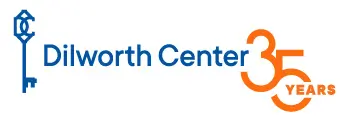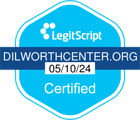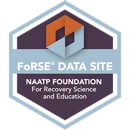June 29, 2025
Short-Term Gain vs. Long-Term Recovery: What Research Really Says About Naltrexone Uses

Browse any forum on alcohol treatment and you’ll see questions like “What are the uses for naltrexone?” or “Can naltrexone alcohol cravings be switched off for good?”
The reality is nuanced: naltrexone is an evidence-based aid, but its benefits are modest and highly dependent on context.
This article unpacks the science behind the most common naltrexone uses—focusing on Alcohol Use Disorder (AUD)—and explains why Dilworth Center treats the drug as a useful adjunct, not a cure.
1. What the Best Studies Show
- Modest but real effect size. A 2023 JAMA systematic review of 118 trials (≈ 21,000 participants) found oral naltrexone 50 mg reduced the risk of returning to heavy drinking by an NNT of 11 and cut total consumption by about one drink per drinking day.1
- Comparable meta-analysis. A parallel review on PubMed Central reported similar results: 50 mg daily lowered heavy-drinking days 10–15 % versus placebo, but had little impact on full abstinence.2
- COMBINE Study insights. The landmark 1,383-person COMBINE trial confirmed that naltrexone adds value, but its gains plateau quickly and dissipate when medication stops.6
Take-home: naltrexone helps some people drink less in the short term; it does not “cure” AUD.
2. Context Is Everything
SAMHSA’s latest guidance stresses that all medications for AUD “are most effective when combined with counseling and recovery support services.”3
In trials where naltrexone was given without therapy, benefits shrank dramatically.
Conversely, studies pairing the drug with cognitive-behavioral therapy or brief medical management showed stronger initial reductions in heavy drinking.11
Why? Because alcoholism is bio-psycho-social-spiritual. Blunting neurochemical reinforcement tackles only the biology; therapy and 12-step work address the rest. (See Article 3 for the full discussion on root causes.)
3. Long-Term Efficacy—And the Drop-Off Problem
Adherence is notoriously low. A 2019 pooled analysis of 715 patients found average oral naltrexone adherence at just 50 % of prescribed days; fewer than half remained on the pill after three months.4 Extended-release injections (Vivitrol®) improve adherence but still see one-third of patients discontinuing within 90 days.5 Once dosing lapses, any neurochemical blockade fades and craving can rebound—especially if underlying coping skills were never developed. Practical implication: without strong behavioral supports, the medication’s gains often evaporate.
4. How Long Should Someone Take Naltrexone?
There is no universal timeline. A 2024 clinical FAQ suggests treatment “at least 6–12 months,” noting outcomes improve when therapy extends beyond three months and should be reviewed case-by-case.7 Dilworth Center collaborates with outside physicians to individualize duration, while ensuring guests remain active in counseling and 12-step meetings.
5. Safety Profile—Helpful but Not a Free Pass
- Common side-effects: nausea, fatigue, dizziness, transient liver-enzyme elevation (≈ 5–10 % above placebo).8
- Liver cautions: contraindicated in acute hepatitis or liver failure; periodic monitoring advised.8
- Impairment still occurs. Blocking euphoria does not mitigate alcohol’s motor or cognitive impairment—risk of accidents or poor decisions remains.
As SAMHSA notes, these drugs “do not provide a cure for the disorder.”3 Taking naltrexone to “drink safely” can foster a false sense of security.
6. Other Naltrexone Uses—and Misuses
Opioid Use Disorder (OUD): Naltrexone is FDA-approved for relapse prevention and works by blocking exogenous opioids. Monthly injections simplify adherence and lower liver-toxicity risk versus high-dose oral use.9
Binge-Drinking Reduction: A 2022 American Journal of Psychiatry study showed as-needed dosing before anticipated binges reduced heavy-drinking events in some non-dependent drinkers.10
“Low Naltrexone” Micro-dosing: Popular online, but no high-quality data confirm sub-therapeutic doses (< 25 mg) meaningfully reduce heavy drinking. Dilworth Center therefore does not endorse “low naltrexone” as an evidence-based strategy.
7. Real Markers of Success
Clinical trials focus on statistics such as the number of drinks per day, and γ-GT liver enzymes. Patients and families care about employment, restored relationships, and joy.
Those outcomes arise from holistic change, not chemistry alone. Dilworth Center’s integrated program (medical coordination, counseling, 12-step facilitation, family support) targets every dimension of recovery. Naltrexone may calm cravings so the real work can begin, but the heavy lifting comes from therapy, fellowship, and lifestyle transformation.
Key Takeaways
- Naltrexone uses for AUD show modest short-term benefit—roughly a 10–15 % drop in heavy-drinking days.
- Effectiveness plummets without counseling, 12-step engagement, and lifestyle change.
- Adherence is the Achilles’ heel: half of oral users quit by three months; even injections see one-third dropout within 90 days.
- Naltrexone is an adjunct; alcoholism remains a chronic, multifaceted illness requiring comprehensive care.
References
- McPheeters M, et al. “Pharmacotherapy for Alcohol Use Disorder: A Systematic Review and Meta-Analysis.” JAMA 2023. jamanetwork.com
- Pharmacotherapy for Alcohol Use Disorder: Systematic Review (Open-Access). JAMA 2023. pmc.ncbi.nlm.nih.gov
- SAMHSA. “Medications, Counseling, and Related Conditions.” 2024. samhsa.gov
- Rubio G, et al. “Adherence Across FDA-Approved Medications for Alcohol Use Disorder.” Addict Sci Clin Pract 2019. researchgate.net
- “Outcomes After Initiation of Medications for Alcohol Use Disorder at Discharge.” JAMA Network Open 2024. jamanetwork.com
- Anton RF, et al. “Combined Pharmacotherapies and Behavioral Interventions for Alcohol Dependence (COMBINE Study).” JAMA 2006. jamanetwork.com
- UIC Drug Information Group. “Recommended Duration of Naltrexone Treatment for AUD.” 2024. dig.pharmacy.uic.edu
- SAMHSA. “Medications for Alcohol Use Disorder.” 2024. samhsa.gov
- Verywell Mind. “Once-a-Month Naltrexone Injection for Substance Use Disorders.” 2025. verywellmind.com
- Health.com. “How Taking a Pill May Help Curb Binge Drinking.” 2023. health.com
- O’Malley S, et al. “Six-Month Controlled Naltrexone Study Combined with CBT.” Drug Alcohol Depend 2003. pubmed.ncbi.nlm.nih.gov
- Kahan M, et al. “Medications for Alcohol Use Disorder.” American Family Physician 2016. aafp.org







